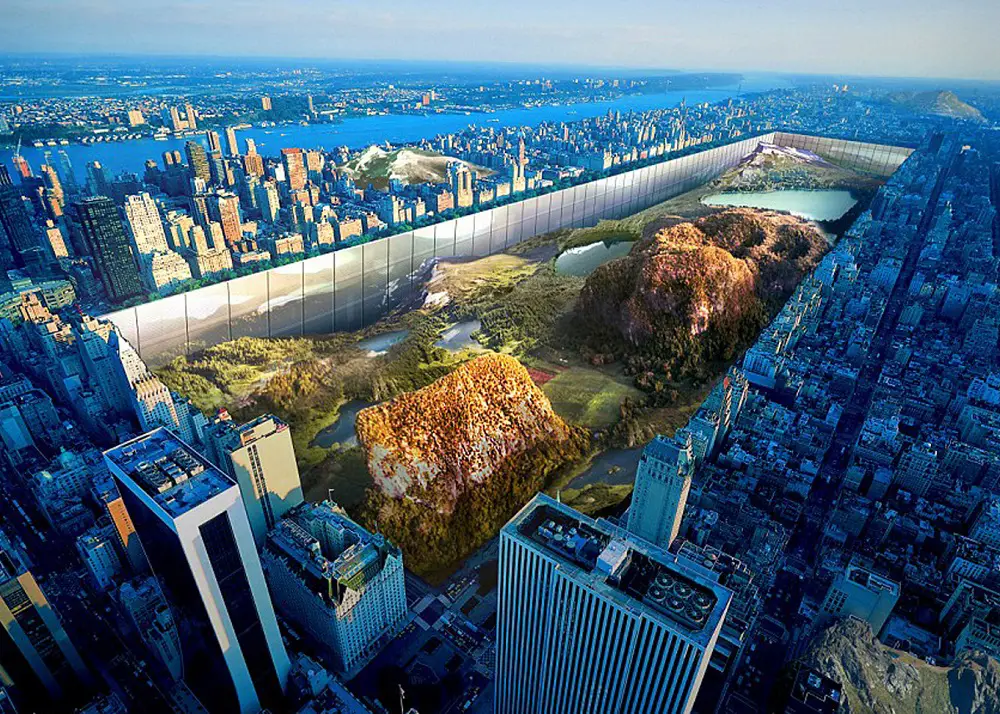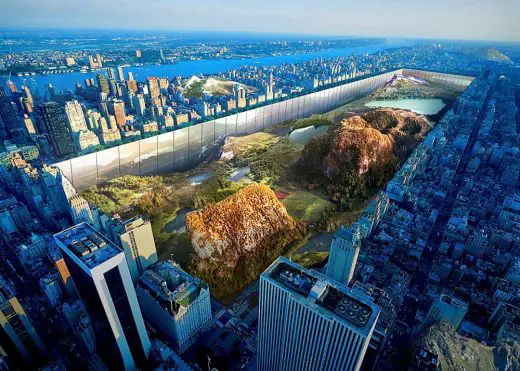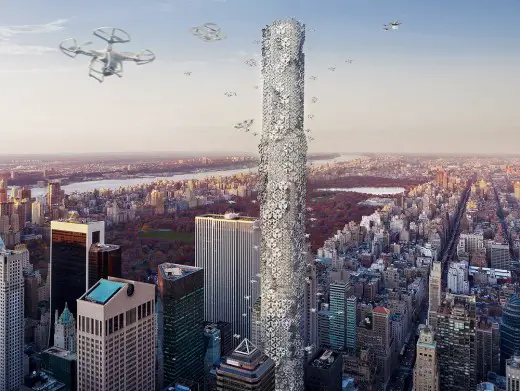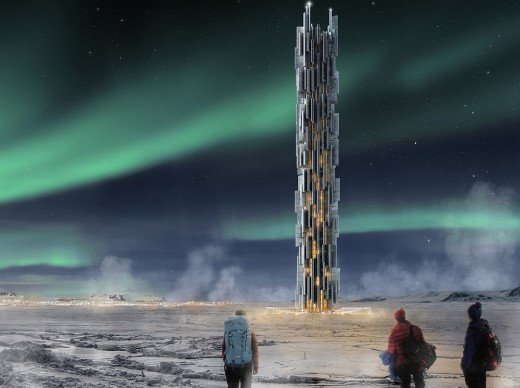eVolo Skyscraper Competition, 2016, Design Contest, News, Magazine, Winners, Buildings
eVolo Competition : Skyscraper Design Contest
Skyscraper Architecture Contest, New York City, USA: Tall Buildings Prize
eVolo Skyscraper Competition 2016
eVolo Magazine announce the winners of the 2016 Skyscraper Competition. The Jury selected 3 winners and 21 honorable mentions from 489 projects received.
Mar 29, 2016
eVolo Skyscraper Competition 2016
The annual award established in 2006 recognizes visionary ideas for building high- projects that through the novel novel use of technology, materials, programs, aesthetics, and spatial organizations, challenge the way we understand vertical architecture and its relationship with the natural and built environments.
The FIRST PLACE was awarded to Yitan Sun and Jianshi Wu from the United States for the project New York Horizon. The design proposes a continuous horizontal skyscraper around the full perimeter of a sunken Central Park. The project would create 7 square miles (80 times greater than the Empire State Building) of housing with unobstructed views and connection to the park.
The Hive, designed by Hadeel Ayed Mohammad, Yifeng Zhao, and Chengda Zhu from the United States received the SECOND PLACE. The project imagines a vertical control terminal for advanced flying drones that will provide personal and commercial services to residents of New York City.
The recipients of the THIRD PLACE are Valeria Mercuri and Marco Merletti from Italy for the project Data Tower. The proposal envisions a sustainable skyscraper in Iceland designed for Internet servers.
Among the 21 honorable mentions there are skyscrapers that purify air, buildings conceived to create rain for the driest regions on Earth, vertical cities, sensory towers that explore our psychological relationship with space, and skyscrapers that prevent cities to sink.
The members of the Jury are: Matias del Campo [principal SPAN], Thom Faulders [principal Faulders Studio], and Marcelo Spina [principal PATTERNS].
eVolo Magazine also announce the publication of EVOLO SKYSCRAPERS 3, the third book in the Skyscraper Series. This publication includes the best 150 projects received in the 2014, 2015, and 2016 competitions. This is a limited edition book and only 500 copies will be available worldwide.
eVolo Skyscraper Competition 2016 Winners
eVolo Skyscraper Competition 2016 First Place
‘New York Horizon’
Yitan Sun, Jianshi Wu
United States
As the busiest and most densely populated county in America, Manhattan has always been a big fan of skyscrapers. Limited by its street grid, however, space in New York City is often skinny and tall. One exception being Central Park, a 1.3 square mile urban park, giving New Yorkers a change to escape the busy urban life. However, only a fraction of them can enjoy Central Park’s natural environment on a daily basis, and most of the population either live or work beyond the walking distance from it.
Is there a way to make Central Park available to more people? Our proposal is a hybrid multi-functional mega structure. Not by building up, but by digging down, it reveals the bedrock (mountain) that was hidden under Central Park, and creates space along the new cliff. The ambition is to reverse the traditional relationship between landscape and architecture, in a way that every occupiable space has direct connection to the nature.
The 1000-feet tall, 100-feet deep mega structure provides a total floor area of 7 square miles, which is about 80 times greater than the Empire State Building. Wrapping all four sides of the new Central Park. This system breaks the traditional perception of large-scale skyscrapers without taking valuable ground area of Manhattan.
The soil removed from the original park is relocated to various neighborhoods, which will be demolished and moved into the new structure. This creates a new urban condition, where landscape can serve as an inherent part of the city.
With its highly reflective glass cover on all sides, the landscape inside the new park can reach beyond physical boundaries, creating an illusion of infinity. In the heart of New York City, a New Horizon is born.
eVolo Skyscraper Competition 2016 2nd place
‘The Hive: Drone Skyscraper’
Hadeel Ayed Mohammad, Yifeng Zhao, Chengda Zhu
United States
Drone technology, adopted by many large corporations, has become a leading trend in the field of fast-delivery, aerial mapping, commercial advertising, government inspection, and filmmaking. As recent years have witnessed a rise in the development of drone technology, several major corporations, such as Amazon, DHL and Walmart, have begun investigating the use of drones in high-speed delivery service.
As more and more people live on internet-based lifestyles, these “small flying robots” could easily become an ordinary part of future everyday life. The demand for high-speed drone delivery is estimated to increase continuously in the upcoming years. However, legal restrictions on the navigation of drones are currently standing in the way of drastically broadening the use of drones in various aspects of our daily lives. No-fly zones and conditions to maintain visibility with the drone at all times are two of the main constraints.
The Hive is an infrastructure project that can better meet the emerging demand for incorporating advanced Drone technology into daily life in New York City. The project was proposed as an alternative asset argument for the usage of the land on 432 Park Avenue, the project aims to create a central control terminal that hosts docking and charging stations for personal or commercial drones (unmanned aerial vehicles) in the center of Manhattan.
The current air-zoning regulations are to be re-shaped in a vertical highway model around a tower. This centrally controlled model will be more appealing to the legislative sector as it adheres to the concerns about regulating drone traffic. The primary location of the building does not only gather the commercial power of Manhattan, but also stands away from the no-fly-zones set by the FAA.
Live Façade
The Modules on the façade are designed to fit nine different types of drones, categorized by the shape and scale of their landing fixtures (point, bar or ring). A sequential study of how to categorize non-uniformed industry products into modular fixed architectural structures was conducted through a series of simplification of the geometries and articulations of the forms. The different sizes and geometry of the drone paired with different size and geometry of the module result in a variety of configurations.
To provide a safe landing environment, the tower projected a new method for drones to dock horizontally onto their corresponding platforms with the fitting shape and scale; the platform with docked drones can be flipped vertically to be in parallel with the tower façade. The façade is constantly animated as the platforms flip outwards and backwards to nest back into it.
The overall organization of the façade uses layering as means to maximize surface area, with two overlapping exterior layers and an inner layer. A hierarchy is established, as the size of drones and modules is smaller in the inner layer creating a more intricate interior that can be accessed by the smallest drones by a major opening in the façade.
The transparency of the tower changes constantly, while the tenants of the building-the drones fly in and out. The flickering lights of the battery station behind each module help with navigation and also indicate the occupancy percentage of the building as well.
eVolo Skyscraper Competition 2016 3rd place
‘Data Skyscraper: Sustainable Data Center In Iceland’
Valeria Mercuri, Marco Merletti
Italy
Data is proliferating: every transaction, entry, emails, and even every mouse click is stored in a server. Annual global IP traffic will pass the zettabyte threshold by the end of 2016, and will reach 2 zettabytes per year by 2019. Considering this, a problem in the near future will be to find a place to store this information.
A data center is the physical location hosting different servers used by many types of companies, it is used to store and process all the information we generate every day.
Today data centers consume a lot of energy and have a large carbon footprint: servers absorb a lot of electrical power and they need to be constantly cooled down to avoid overheating problems.
The solution for the future is hosting data centers where the power is clean and the costs are low. For this reason some companies have been started to think about Iceland. Iceland is a strategic location for data centers for 3 reasons:
• Location: its placement between Europe and the U.S. means that companies can run their web services for both continents in one location;
• Renewable energy sources: Iceland can offer data center services powered by 100% clean energy (hydropower and geothermal) for the same price or less than web services powered by fossil fuel-based grids in other locations;
• Climate: Iceland’s proximity to the Arctic Circle allows exploiting cold temperatures and a fresh natural breeze that could be used to cool down the servers avoiding the costs of a traditional cooling system.
Our project is a vision of how could it be a future green data center located in Iceland. A data center is often a large industrial building without a significant architectural connotation, a big anonymous container. The main issue of our project is to investigate a new morphological solution that could represent both the complexity and the importance of the building into which we keep our data. Above all, we conceive the data center’s configuration in order to maximize the use of the available renewable energies and also to allow the re-use in a sustainable way.
The tower is conceived as a giant 3D motherboard with a cylindrical shape. On the external façade are fastened all the hardware components, otherwise the internal part is empty. This void is a technical space with a double function: first, it is the main air duct of the cooling system, and second it is a space where the pods can be moved to the ground floor, during the maintenance and the upgrade phases.
As well as in a computer case, a huge cooling fan on the top of the tower activates a natural chimney effect, thanks to which each pod takes the natural fresh air from outside and releases the warm air inside. A part of this air is expelled from the top of the tower, another part is re-used to heat the laboratories and the greenhouses situated in the basement. During the winter the warm air released by the server could be also used to heat the houses in the surrounding neighborhood.
The modern data center is a particular building in continuous evolution: as well as in a motherboard, where the components are always replaced and updated, also the façade of the tower is adaptable and in continuous evolution; in fact, depending on necessity, the density and the position of the pods can freely change increasing the height of the tower. Read the rest of this entry »
Honorable Mention 1
‘Trans-Pital: Space Adaptive Skyscraper Hospital’
Chen Linag, Jia Tongyu, Sun Bo, Wang Qun, Zhang Kai, Choi Minhye
China
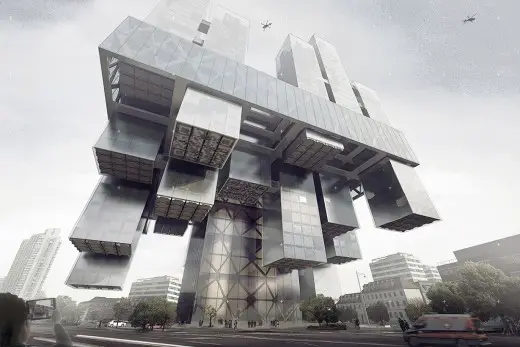
Honorable Mention 2
‘Biomorph Skyscraper: Atmosphere Of The Place’
Jayong Shim, Dailong Ma, Tai Feng
United States
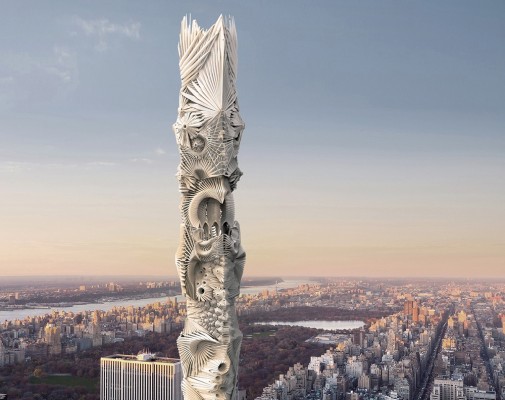
Honorable Mention 3
‘Air-Stalagmite: A Skyscraper To Serve As A Beacon And Air Filter For Polluted Cities’
Changsoo Park, Sizhe Chen
United States
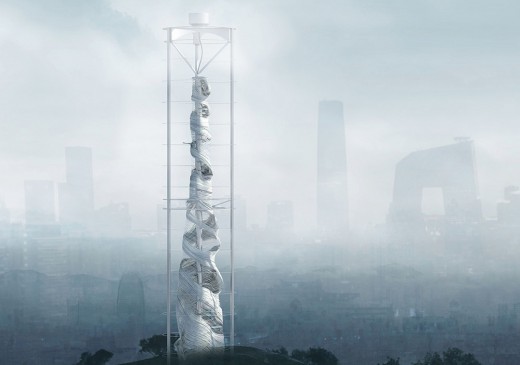
Honorable Mention 4
‘Cloud Craft: Rainmaking Skyscraper’
Michael Militello, Amar Shah
United States
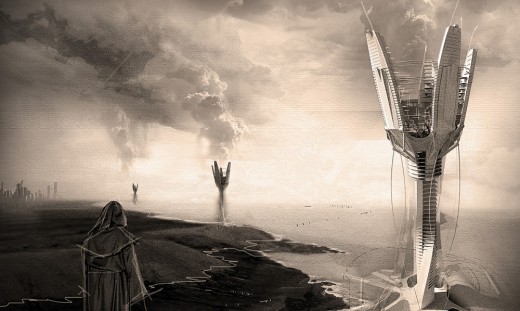
Honorable Mention 5
‘Return To Nature Skyscraper’
Nathakit Sae-Tan, Prapatsorn Sukkaset
Thailand
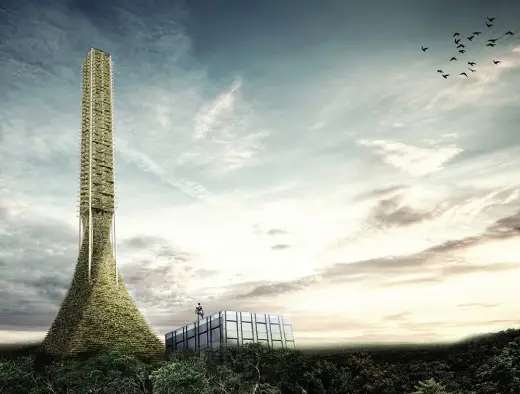
Honorable Mention 6
‘Sustainable Skyscraper Enclosure’
Soomin Kim, Seo-Hyun Oh
South Korea
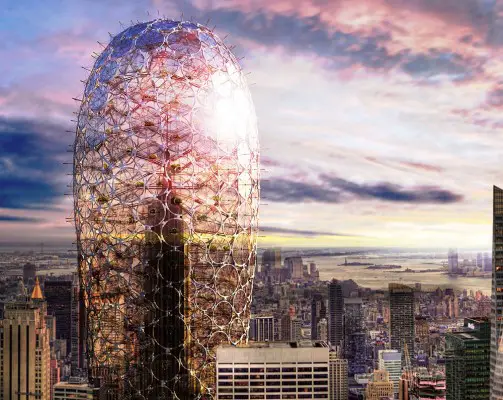
Previously:
Aug 30, 2013
eVolo Skyscraper Competition 2014
eVolo Skyscraper Competition 2014
eVolo Skyscraper Competition 2014 – architecture contest news
eVolo Magazine is pleased to invite architects, students, engineers, designers, and artists from around the globe to take part in the eVolo 2014 Skyscraper Competition. Established in 2006, the annual Skyscraper Competition is one of the world’s most prestigious awards for high-rise architecture.
It recognizes outstanding ideas that redefine skyscraper design through the implementation of novel technologies, materials, programs, aesthetics, and spatial organizations along with studies on globalization, flexibility, adaptability, and the digital revolution. It is a forum that examines the relationship between the skyscraper and the natural world, the skyscraper and the community, and the skyscraper and the city.
Mar 13, 2013
eVolo Skyscraper Competition
eVolo Skyscraper Competition 2013 News
Winners of the eVolo 2013 Skyscraper Competition: 3 winners and 24 honorable mentions.
eVolo Magazine is pleased to announce the winners of the 2013 Skyscraper Competition. The award was established in 2006 to recognize outstanding ideas for vertical living. Since then, the publication has received more than 5,000 projects that envision the future of building high. These ideas, through the novel use of technology, materials, programs, aesthetics, and spatial organizations, challenge the way we understand vertical architecture and its relationship with the natural and built environments.
In 2013, the Jury, formed by leaders of the architecture and design fields selected 3 winners and 24 honorable mentions. eVolo Magazine received 625 projects from all continents and 83 different countries. The winners were selected for their creativity, ingenuity, and understanding of dynamic and adaptive vertical communities.
1st place:
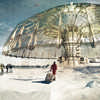
image from eVolo Skyscraper Competition
The first place was awarded to Derek Pirozzi from the United States, for his project “Polar Umbrella”. The proposal is a buoyant skyscraper that rebuilds the arctic ice caps by reducing the surface’s heat gain and freezing ocean water. In addition, the super-structure is equipped with a desalinization plant and solar powered research facilities and eco-tourist attractions.
2nd place:

image from eVolo Skyscraper Competition
The recipients of the second place are Darius Maïkoff and Elodie Godo from France, for their “Phobia Skyscraper”. The project seeks to revitalize an abandoned industrial area of Paris, France, through an ingenious system of prefabricated housing units. Its modularity allows for a differentiation of various programs and evolution in time.
3rd place:
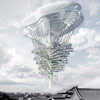
image from eVolo Skyscraper Competition
The third place was awarded to Ting Xu and Yiming Chen from China, for their project “Light Park”, a floating skyscraper that takes new development within large cities to the sky. The project allows for a continuous growth of the world’s mega-cities by providing adequate infrastructure, housing, commercial, and recreational areas.
The honorable mentions include several projects that explore a sustainable urban future including a pH conditioner skyscraper that resembles a jellyfish and purifies polluted air or a volcano skyscraper that harvests geothermal energy. Some projects explore new frontiers such as a proposed network of skyscrapers in the stratosphere, a cluster of artificial islands that create the 7th continent in the Pacific Ocean, and nomad skyscrapers that terraform Mars. Other honorable mentions include morphing structures and digital explorations among many more ideas that look into the future of our natural and built environments.
eVolo Skyscraper Competition 2013 – entry
eVolo Skyscraper Competition Design – VetiVertical City
Design: Eugenio Aglietti
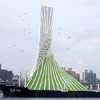
image from architect
Vetiver is a tropical plant with unique characteristics. Since the 80s, the Vetiver System (VS) has been tested for slope stabilization, pollution control and water quality improvement. Plants like Vetiver can absorb about 5,3 kg of CO2 per square meter during a year. If Vetiver has these miraculous features, why don’t use it in architecture? The 410 meters tall VetiVertical City aims to match the multi-functionality of a skyscraper with the new sustainable technology of VS.
eVolo Skyscraper Competition 2013 – Jury
– Vincent Callebaut [principal Vincent Callebaut Architectures]
– Giacomo Costa [visionary artist, author: The Chronicles of Time]
– Julien De Smedt [principal Julien De Smedt Architects – JDS]
– Hernan Diaz Alonso [principal Xefirotarch, Graduate Programs Chair at SCI-Arc]
– Mathias Hollwich [principal HWKN, founder Architizer]
– Ed Keller [principal aUm Studio, Associate Dean at Parsons New School of Design]
– Marc Kushner [principal HWKN, founder Architizer]
– Francois Roche [principal R&Sie(n) architecture, professor at GSAPP Columbia University]
– Roland Snooks [principal Kokkugia, professor at GSAPP Columbia University, University of Pennsylvania]
– Dongbai Song [winner 2012 Skyscraper Competition]
– Tuuli Sotamaa [principal Sotamaa Design, designer at Alessi]
– Kivi Sotamaa [principal Sotamaa Design, Director at Aalto Digital Design Laboratory, Professor at UCLA]
– Tom Wiscombe [principal Tom Wiscombe Design, professor at SCI-Arc]
– Hongchuan Zhao [winner 2012 Skyscraper Competition]
– Zhi Zheng [winner 2012 Skyscraper Competition]
eVolo Skyscraper Competition 2013 – Awards
– 1st place : US $5000
– 2nd place : US $2000
– 3rd place : US $1000
Jul 3, 2012
eVolo 2013 Skyscraper Competition
eVolo Skyscraper Competition 2013
eVolo Magazine is pleased to invite students, architects, engineers, designers, and artists from around the globe to take part in the eVolo 2013 Skyscraper Competition. Established in 2006, the annual Skyscraper Competition is one of the world’s most prestigious awards for high-rise architecture.
The participants should take into consideration the advances in technology, the exploration of sustainable systems, and the establishment of new urban and architectural methods to solve economic, social, and cultural problems of the contemporary city including the scarcity of natural resources and infrastructure and the exponential increase of inhabitants, pollution, economic division, and unplanned urban sprawl.
The competition is also an investigation on the public and private space and the role of the individual and the collective in the creation of a dynamic and adaptive vertical community. It is also a response to the exploration and adaptation of new habitats and territories based on a dynamic equilibrium between man and nature – a new kind of responsive and adaptive design capable of intelligent growth through the self-regulation of its own systems.
There are no restrictions in regards to site, program or size. The objective is to provide maximum freedom to the participants to engage the project without constraints in the most creative way. What is a skyscraper in the 21st century? What are the historical, contextual, social, urban, and environmental responsibilities of these mega-structures?
eVolo Magazine is committed to continue stimulating the imagination of designers around the world – thinkers that initiate a new architectural discourse of economic, environmental, intellectual, and perceptual responsibility that could ultimately modify what we understand as a contemporary skyscraper, its impact on urban planning and on the improvement of our way of life.
eVolo Skyscraper Competition 2013 – Schedule
– Jun 25, 2012 : Competition announcement, registration begins, acceptance of questions
– Nov 5, 2012 : Deadline for submitting questions
– Nov 13, 2012 : Early registration deadline
– Dec 3, 2012 : Answers to questions posted on website
– Jan 15, 2013 : Late registration deadline
– Jan 22, 2013 : Project submission deadline (23:59 hours US Eastern Time)
– Mar 11, 2013 : Winners’ announcement
Winners and special mentions will be published in several print magazines including eVolo_07
Evolo Skyscraper Competition 2013 – external link to winners on eVolo website
eVolo Skyscraper Competition 2013 information from eVoloeVolo 2012 Skyscraper Competition Winners
WINNERS OF THE 2012 SKYSCRAPER COMPETITION ORGANIZED BY EVOLO MAGAZINE IN NEW YORK CITY
eVolo Magazine is pleased to announce the winners of the 2012 Skyscraper Competition. Established in 2006, the annual Skyscraper Competition recognizes outstanding ideas that redefine skyscraper design through the use of new technologies, materials, programs, aesthetics, and spatial organizations, along with studies on globalization, flexibility, adaptability, and the digital revolution.
This is also an investigation on the public and private space and the role of the individual and the collective in the creation of a dynamic and adaptive vertical community. The award seeks to discover young talent, whose ideas will change the way we understand architecture and its relationship with the natural and built environments.
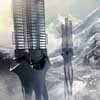
eVolo Skyscraper Competition 2012 1st place images from eVolo
The first place was awarded to Zhi Zheng, Hongchuan Zhao and Dongbai Song from China for their project “Himalaya Water Tower“. The proposal is a skyscraper located high in the Himalayan mountain range that stores water and helps regulate its dispersal to the land below as the mountains’ natural supplies dry up. The skyscraper, which can be replicated en masse, will collect water in the rainy season, purify it, freeze it into ice and store it for future use.
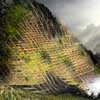
eVolo Skyscraper Competition 2012 1st place images from eVolo
The second place was awarded to Yiting Shen, Nanjue Wang, Ji Xia, and Zihan Wang from China for their project “Mountain Band-Aid”, a design that seeks to simultaneously return the displaced Hmong mountain people to their homes and work as it restores the ecology of the Yunnan mountain range.
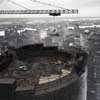
eVolo Skyscraper Competition 2012 1st place images from eVolo
eVolo Skyscraper Competition 2012 entry – ‘Z Axis Village’
Dr. Peter Magyar, RIBA, CAHA Professor of Architecture and Urban Design
William Yankey, Visiting Assistent Professor
both in the College of Architecture, Planning + Design, Kansas State University
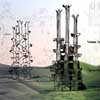
eVolo Skyscraper Competition 2012 entry images from Peter Magyar
eVolo Skyscraper Competition 2012 entry – ‘Controlled Collapsing’
Alexandre Guilbeault, M.Arch (Université de Montréal)
David Giraldeau, M.Arch (University of Calgary)
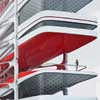
eVolo Skyscraper Competition 2012 entry images from Alexandre Guilbeault
Evolo Skyscraper Competition 2012
Location: New York City, NY, USA
eVolo Skyscraper Competition Previous Winners
eVolo – 2011 Skyscraper Competition Winner
1st place design
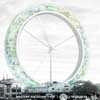
eVolo Skyscraper Competition 2011 winners image from eVolo
Evolo Skyscraper Competition 2011
eVolo – 2010 Skyscraper Competition Winner
1st place design
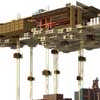
image from architects
eVolo Skyscraper Competition 2010
eVolo – 2009 Skyscraper Competition Winner
1st place design
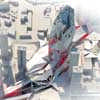
image from architects
eVolo Skyscraper Competition 2009
Architecture Design
Contemporary Building Designs – recent architectural selection from e-architect below:
Building Competitions : Archive
Comments / photos for the eVolo Skyscraper Competition 2013 page welcome
Website: www.evolo.us/competition

